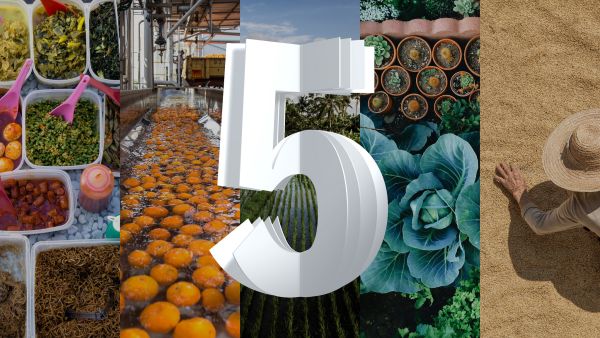In the next five years, the Earth's population will exceed eight billion for the first time. Our complex food chain - already overburdened by climate change and limited water resources - will be put to the test even more.
To meet the demands of this future overcrowded, we will need new technologies and devices, scientific breakthroughs and completely new ways to think about food safety and security.
IBM researchers around the world are already working on solutions dedicated to each stage of the food chain. They help farmers maximize crop yields and develop ways to reduce the food waste epidemic that destroys 45% of our food supply.
Our scientists work to create a safety net that captures pathogens and contaminants before they get people sick. And they invent ways to keep plastic away from landfills and oceans.
This week, we will present scientists behind this year's "5 in 5" program at the Science Slam contest at IBM's biggest event dedicated to customers of the year: Think 2019 in San Francisco.
Watch this live program on Wednesday, February 13, from 20:00 to 21:00 local time (UTC / GMT + 2), or watch the resume here.
Science Slam contests give our researchers the opportunity to convey the importance of their work to a general audience within a very short period of time - about five minutes.
We have discovered that this is an extremely useful exercise that makes innovation more accessible, reducing it to its essential elements.
Our researchers inspire us to imagine what else could it be possible in the next five years.
When the person with the number of eight billion will be born on Earth, that person will enter a more connected, interdependent and more receptive world to change than the one her parents have ever imagined. This is the future that awaits us.
Here's a summary of the predictions that IBM scientists will present this year.
From seed...
Digital technologies in agriculture will contribute to feeding a growing population, using fewer resources
How do you give credit to a farmer who has never set foot in a bank? By digitizing and capturing all aspects of agriculture, from soil quality, to the skills of the tractor driver and the price of melons sold on the market. This is known as Digital Twin, and over the next five years, with AI, we can all use this data to accurately predict crop yields, providing banks and financial institutions with the data they need to provide credit that to help farmers grow - maybe, after all, money grows in trees.
To harvest...
Blockchain technology will prevent food waste
In five years, we will eliminate much of the unknown costly food supply chain. From farmers to food suppliers, each supplier in the supply chain will know exactly how much to plant, order and dispatch.
From farmers to food suppliers, each supplier in the supply chain will know exactly how much to plant, order and dispatch.
Food wastage will be significantly reduced, and products going into consumer strollers will be fresher - when blockchain technology, IoT devices and AI algorithms will unite their forces.
To shelf....
Mapping the microbiome will protect us from bad bacteria
Within five years, food safety inspectors around the world will get a new superpower: the ability to use millions of microbes to protect what we eat.
These microbes - some suitable for human consumption, others not - are regularly introduced into food on farms, factories and food stores.
Thanks to a new technique that allows us to analyze their genetic composition cost-effectively, microbes will tell us a lot about the safety of the food we eat.
At the table…
The AI sensors will detect food pathogens at home
Within five years, the farmers, food processors and groceries from around the world - along with billions of people who cook at home - will be able to effortlessly detect harmful contaminants in food.
They only need a mobile phone or AI sensor worktop.
IBM researchers create powerful, mobile AI sensors that can detect food pathogens anywhere they may appear. These mobile sensors for bacteria could dramatically increase the rate of a pathogen test from a few days to a few seconds, allowing people across the food chain to detect the presence of E. coli or Salmonella pests before an outbreak occurs.
To the trash...
A new and radical recycling process will give a new life to the old plastic
In five years, waste disposal and the creation of new plastics will be completely transformed.
All objects, from milk boxes to crackers, food bags and cheese packs, will be recyclable, and polyester production companies will be able to take over the waste and turn it into something useful.
This transition will be supported by innovations such as VolCat, a chemical catalytic process that digests certain plastics (called polyesters) into a substance that can be fed directly into plastic machines to create new products.






























